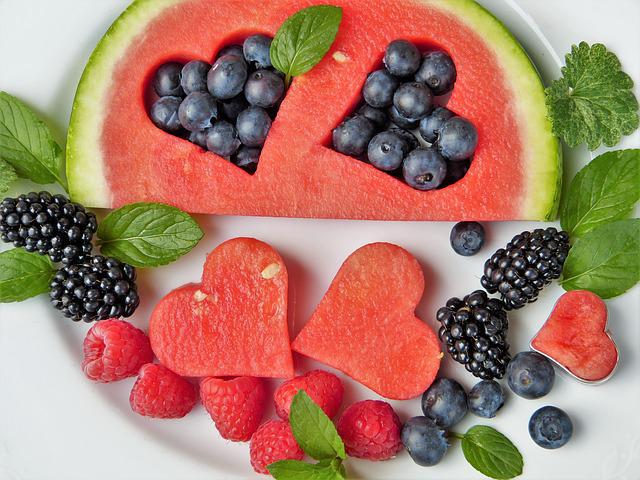
It's possible for a person to eat many different foods while still maintaining good health. Some of these foods are, however, not very healthy. They contain ingredients you wouldn't even think to include in your diet, such as artificial sweeteners. You have many options to choose from that are safe for your body and good for your health. There are foods that are healthy for you, but not for you.
You may be hearing about a lot of "healthy" foods out there, like yogurt, granola, and kale chips. While these foods sound delicious, not all are created equal. Although some of these items may sound great for your health, they can actually be harmful for your health. These foods may have small amounts of vitamins or helpful herbs but are high in sugars and fats.
These products are mislabeled on their labels. These products may appear healthy but could contain hidden nutritional dangers. These foods may contain ingredients or additives you cannot pronounce. Others are loaded with hydrogenated oils, trans fats, artificial colors, and more. It is possible to swap out everyday grocery items for healthier options. This will help you lose weight, improve your health, and make these foods healthier.
Many "healthy" foods found on grocery store shelves may contain more sugar than you realize. For example, Dannon Strawberry Fruit on the Bottom yogurt contains 15 grams of sugar per serving. Flap style yogurts and yogurts that have candy toppings are more sugary than regular yogurt. You can choose unsweetened yogurt, plain yogurt, or yogurt with fresh fruit. Some people believe that food with more protein is better. It is false. Protein is naturally found in many foods, such as fish, eggs, and legumes. Protein bars can also be a source of protein.
Many health foods may not be good for your health, contrary to popular belief. Avoid eating processed meats, and avoid fast food that is deli-style. Also, avoid eating deli-style sandwich and turkey. These foods are bad for you. Deli-style turkeys, for example, are high in sodium and artificial flavor. Low-fat dairy products are also loaded with fillers that may not be beneficial for your health.

Frozen yogurt is not good for your health but you can still enjoy it on occasion. Make sure you read all labels and limit your intake to small amounts. Another snack option that is good for you is yogurt-covered pretzels. These types of snacks are sold at health food stores and are sometimes marketed as a healthier alternative. These foods have similar sugar and fat levels to chocolate-covered pretzels.
Organic and natural foods have a better quality than processed foods. Organic food can be bought without pesticides. These foods often have the same ingredients that regular ones, such as sugar. While they may be healthier, these products still contain some calories and fat. Food labels might state they are good for health, but you should still read labels to ensure that they are safe.
Energy bars have more calories and sugar than candy bars. Choose a bar that's only 100 to 200 calories. Bars with lower sugar and fiber levels have four grams of protein and a low glycemicindex. Energy bars can provide all of these benefits. However, they are not the best for your health. Online and at your local health food shop, you can find healthy energy bars.

Many people are unaware that healthy foods can be harmful. Yogurt, no matter how it is made, contains high levels of sugar and fat. This is why yogurt is a good choice. Unlike chicken, it contains probiotics, which aids digestion. It is also high in protein making it an excellent food for your health. A chicken parm sandwich is not a good choice because of its high protein content.
FAQ
How can I be hired as a chef?
A word of mouth referral can lead to a job as cook. People in your circle of friends might know about restaurants that need additional staff. There are often openings posted on websites and bulletin boards.
What skills do I need to get into culinary school?
To become a chef, you must be able to cook well, work under pressure, and understand food safety regulations. You should enroll in cooking classes at local community colleges or high schools to learn how to cook. Once you have learned the basics of cooking, it is time to look for work at a restaurant.
How do I become a Chef?
There are many routes to becoming a chef. To start, you can take a course at your local community college. You can then look into going to culinary school. Finally, consider a paid internship.
How long does it take to learn to cook? How long do I need to learn to cook?
It depends on your level of skill. Some people can learn basic cooking techniques in as little as a week. Others might need months or even years to master basic cooking techniques.
The time taken to learn to cook will depend on who you ask. A person who has never cooked before will likely need more time to learn than someone who is a regular cook. You may also need more experience with certain types of cooking than others. For instance, baking requires more knowledge than frying.
Focusing on a particular technique is the best way to speed up your cooking skills. After mastering one technique, you can move on to the next. It doesn't matter how long it takes to master a particular technique. You can just keep at it and enjoy the process.
What is the average time it takes to become a chef? What is the average career track?
The average time it takes to become a chef is five years. You will learn basic cooking techniques, and get experience as a chef assistant. You can apply for line, sous or executive chef positions after you complete your training. The salary range for a chef is between $25,000 to $60,000 per annum.
What does a culinary program cost?
Culinary school costs vary depending on where you go, how long you study, and what program you choose. The average tuition cost is $10,000-$30,000 annually. Most students graduate with about $20,000 in debt. However, some programs offer scholarships, grants, and work-study opportunities.
Statistics
- In the United States, the category is estimated at $23.2 billion annually and is growing faster than the market. (washingtonpost.com)
- You'll be amazed that over 90% of CIA students receive scholarships and grants to finish their culinary studies. (ischoolconnect.com)
- The median pay for a chef or head cook is $53,380 per year or $25.66/hour, according to the U.S. Bureau of Labor Statistics (BLS). (learnhowtobecome.org)
External Links
How To
How to cook steak
The thickness of the meat determines the best cooking method. For example, thinner steaks are best cooked over low heat, while thicker ones need higher temperatures.
You should also ensure you don't overcook them because they'll lose flavor. Make sure to remove the steaks from the pan after it is done. This will help you avoid burning your skin.
Cooking times will vary depending on how large the steak is and what degree of doneness you desire. Here are some general guidelines.
Medium Rare: Cook until medium rare, which means the internal temperature reaches 145degF (63degC). This will take between 3 to 5 minutes per side.
Medium: Cook to medium (or until the internal temperature reaches 160degF/71degC). This usually takes about 6 minutes per side.
Well Done: Cook until well done, which means the internal temps reach 180degF (82degC). This usually requires 8 to 12 minutes per side.